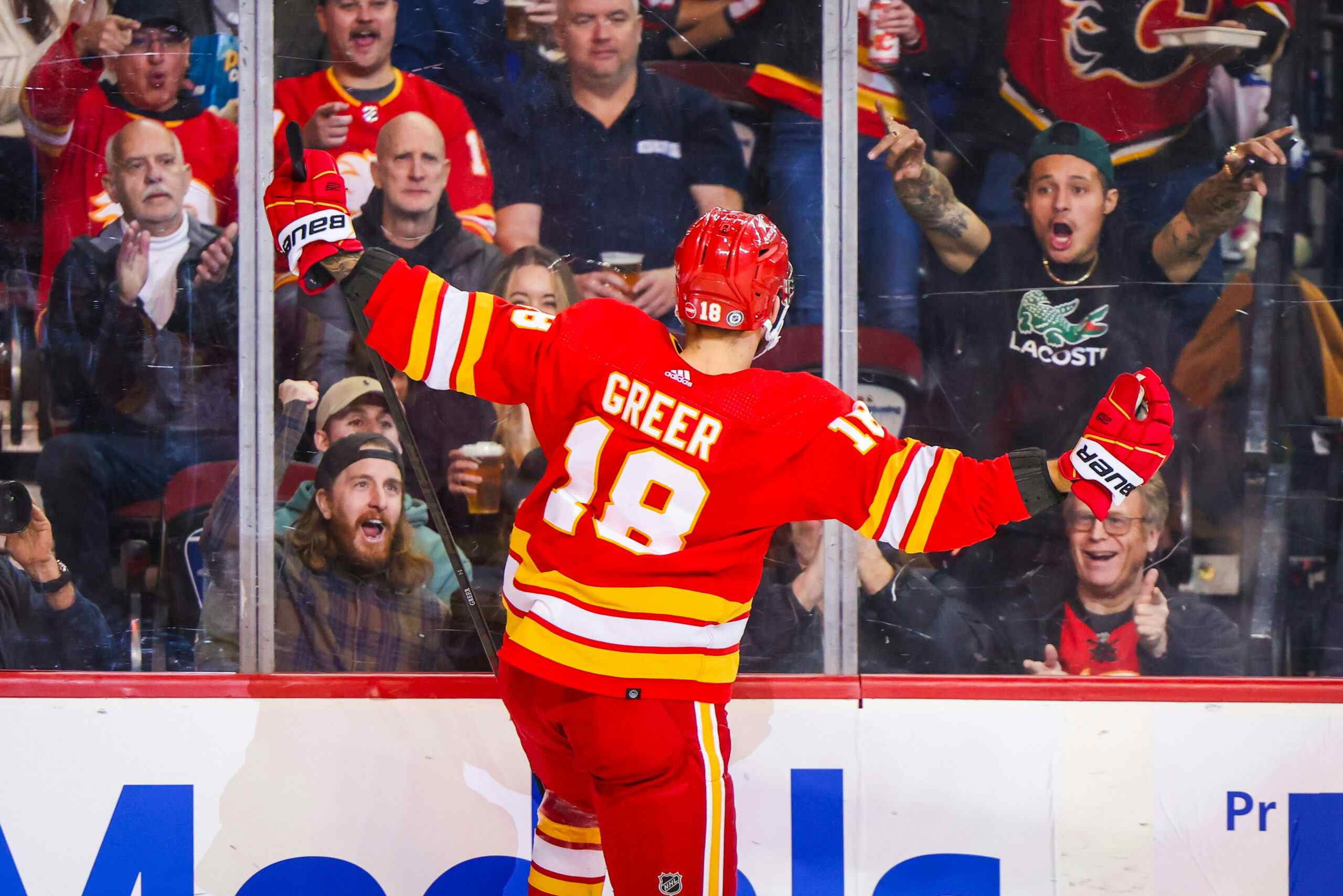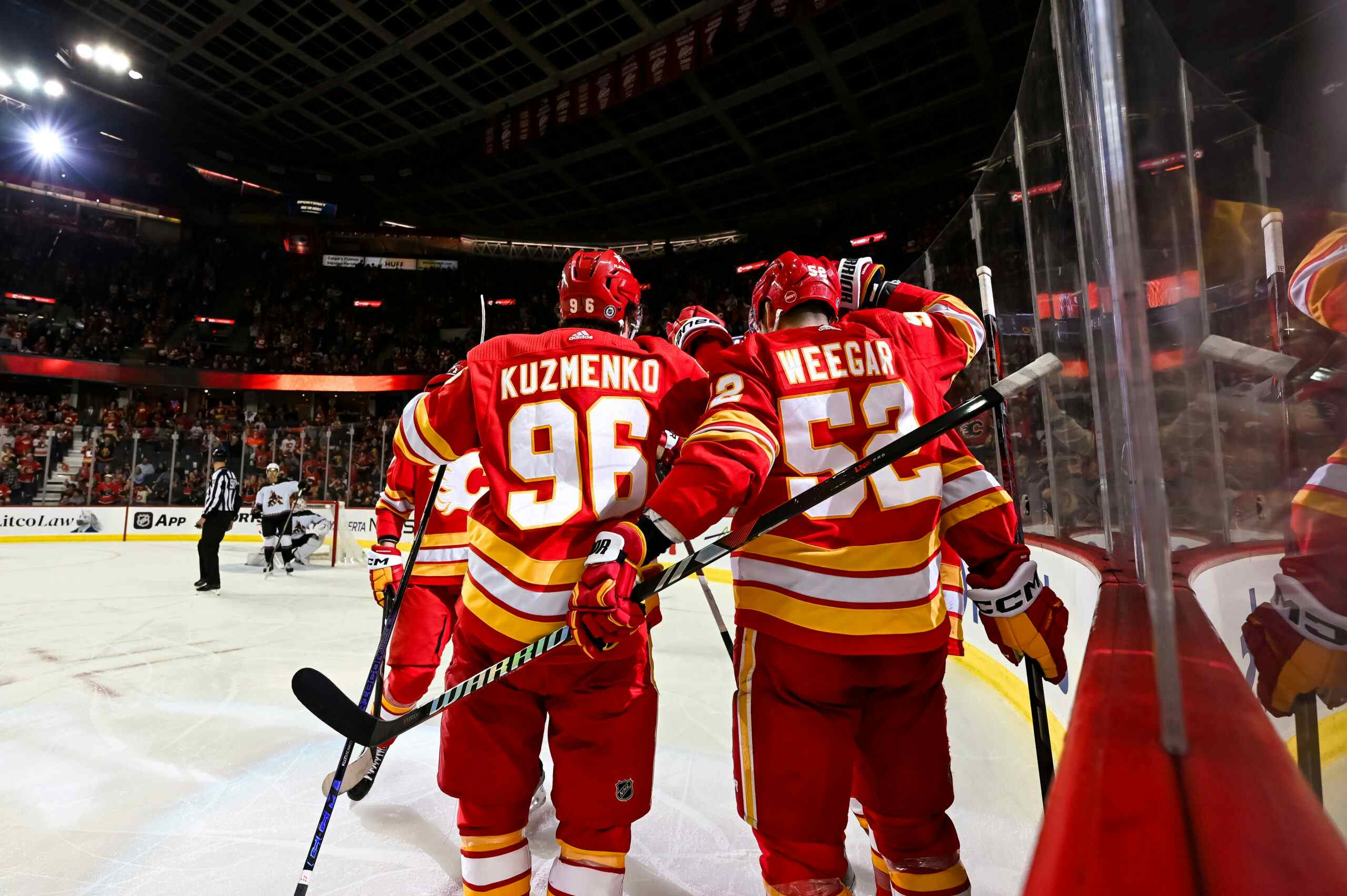ACME NHL Rebuilding Kit™
By RexLibris
10 years agoWith the Flames rebuilding through the draft I thought I’d take a look at other teams that have drafted their core as part of a rebuild to determine a line as to where success and failure lie.
I decided to look at four recently rebuilt and relatively successful teams that used the draft as a principal means of talent acquisition – Chicago, Los Angeles, Pittsburgh and Washington. This isn’t an exhaustive search, and doubtless there are other examples of teams rebuilding their roster through various means, but these four are some of the most notable rebuilds since 2000 and three of them have become Stanley Cup champions in the last five years. I also felt that the Flames were closer to the situations in which these teams found themselves at the beginning of their rebuild than most other examples.
I’ve used the draft years from the beginning of each team’s rebuilding efforts to the last year that can reasonably be described as “rebuilding”, all of which were originally outlined in my rebuilding series. I’m counting players who have managed to get 100+ NHL games as successfully drafted players. You may notice that I have used the term “missed on” to note draft picks that did not make the cut, but I need to emphasize that this isn’t intended to suggest that they were mistakes, simply to give some perspective as to the number of selections made in a year relative to those that became NHL players. This helps to illustrate things like luck, scouting skill, development, and different approaches to rebuilding.
We’ll begin with Pittsburgh, whose rebuild began in 2002 and continued to 2006.

The Penguins did relatively well at the draft table early on, finding players with their depth picks, albeit not necessarily developing those players themselves (while Matt Moulson looks like a bit of an organizational misstep now we can at least say that the scouts were right). What is most interesting about this list is how many of these players are no longer members of the Penguins: Whitney, Christensen, Talbot, Carcillo, Bissonette, Moulson, Goligoski, Johnson, and Staal. It also illustrates how many selections, at all points in the draft, can fail to cover the bet as the Penguins failed to convert on four 2nd round picks during this period – 35th, 32nd, 31st, and 32nd.
Of their current core group, the Penguins drafted four of them during this period while the remaining players were lost to contract attrition and trade. The most significant note on the Penguins’ draft history is winning the lottery to select Sidney Crosby in 2005. This will become a common theme to three of the four teams here.

Chicago Blackhawks
Some things will obviously stand out here, such as it taking Corey Crawford ten years from his draft day to prove that he is an NHL starting goaltender. This is not unlike the emergence of Brian Bickell this past spring, nine years after he was drafted.
Perhaps the two things that stand out most from the ‘Hawks draft record is that they struggled to add players through the draft after 2004 and that they arguably won at least one Stanley Cup the day they won the draft lottery in 2007 to go from picking 5th to 1st and selecting Patrick Kane. It should also be noted how many draft picks the Blackhawks invested in the 2004 and 2005 drafts, an astonishing 17 and 12 selections, respectively.

Washington Capitals
The Capitals have built a team almost in spite of their drafting rather than because of it. They lack a significant number of elite-level players acquired through the draft and appear to have relied heavily on one or two core guys. Their inability to find an impact NHL player in 2005 with two first round picks in what was a relatively good draft year has likely had a greater impact on the team than one might initially think. This coupled with the underwhelming results from 2007 mean that the Capitals won the day in 2004 when they won the draft lottery, moving from selecting 2nd to 1st, and were able to select Alex Ovechkin, but have not been able to find enough other talent to push them over the top.
Curiously enough, the apparent luck the Capitals had when they traded Varlamov to the Avalanche two years ago for a 1st and a 2nd round pick which eventually landed them Filip Forsberg was squandered when they then traded that windfall prospect to the Predators for Martin Erat.

Los Angeles Kings
*I have given some leeway to Lindon Vey and Brandon Kozun for two reasons – they are still too recently selected to have garnered 100+ games but have performed well enough to give them the benefit of the doubt in so far as it appears that the Kings were correct in selecting these players when they did.
Dwight King, Andrei Loktionov and Jordan Nolan are all just below 100 NHL games, but are almost guaranteed to pass that milestone this season.
We see here that the Kings were able to add, year over year, players who would either form the core of their new roster or would eventually develop into strong supporting players (Lewis, Martinez, King, Nolan). At the same time, the Kings weren’t able to win a Stanley Cup until after they had made some significant roster moves that involved trading away some significant assets (Simmonds and Schenn as well as two 1st round picks). At the same time the Kings never went into the draft with an unmanageable number of draft picks, preferring to select no more than ten prospects in any given draft during this period.
While the Kings emphasized the draft as a part of their rebuilding efforts, they were never bad enough to garner the top picks except in three cases, Drew Doughty, Thomas Hickey and Brayden Schenn. Hickey has famously struggled to meet expectations as a 4th overall selection (one which Lombardi traded up to get) and Schenn was the collateral on the trade that brought Mike Richards to Los Angeles and helped complete the picture of their 2012 Stanley Cup championship.
And Now your Calgary Flames!

Personally, I believe that the Flames’ rebuild began this spring with the trading of Jarome Iginla and Jay Bouwmeester, but for the sake of providing some background and lead up to their present prospect situation I’ve chosen to show the results going back to the 2011 draft.
Based on what we have seen from the teams listed above, the Flames would need to add at least one or two players from each of these draft years in order to keep pace as they progress through the rebuilding stages. In the draft years that we examined above, no team managed to turn 50% or more of their draft cohort into NHL talent (setting aside the Kings’ 2009 draft for the time being).
Conclusions
Something that came up during this process was that often there were approximately two years of each team trying to explore alternative routes to a rebuild. Often times they would end up drafting one or two players who would incidentally go on to become a part of their new core. The Flames match up to this pattern almost perfectly with 2011 and 2012 being their “lead in” years to the first rebuild draft (in this case 2013). Based on the most common pattern of teams in this position then, the Flames could expect another four years of drafting somewhere within the top ten.
While one cannot know which players will be around once this rebuild is finished but history has shown that there will be surprises. Already the emergence of TJ Brodie and the importance of Mikael Backlund are important factors in the direction of this team, both of whom predate any thoughts of the Flames’ current situation.
There are, however, two circumstances that need to be taken into account and will have unforeseen effects on this process: new divisional play and luck, specifically the luck involved in winning the draft lottery (ie: 1st overall) which now moves to all non-playoff teams.
I cannot speak as to what the future of the draft holds as a result of the new divisional play, but I suspect there are going to be some teams surprised to find themselves drafting so high next spring because they simply are not good enough to win out their division.
However, the other factor that I think may have less overall impact to the league but a greater impact to the one or two teams at the very bottom, is the expanding of the draft lottery to all non-playoff teams. While the basic math hasn’t changed, the stakes have, with the winner moving up to 1st overall. Granted, there has only been one instance of a team outside of the bottom five winning the draft lottery in the last ten years (the New Jersey Devils in 2011 moving from 8th to 4th), however the percentages of retaining the 1st overall pick have subsequently dropped from 48% to 25%.
It should also be noted that three of the four teams above won the draft lottery during their rebuilding period, moving up to draft 1st overall and in each case that selection became a pivotal one for the franchise (Crosby, Kane and Ovechkin, respectively). Luck, both good and bad, is going to have a significant impact on the Flames rebuild and the new draft lottery rules are likely to play a role at some point in time over the next few years.
The one team that did not win the draft lottery during their rebuilding period, Los Angeles, managed to collect a quality roster by means of strong drafting (which is equal parts good scouting and good luck) and fortuitous trades. Dean Lombardi has done a great deal in Los Angeles with some good fortune and an aggressive management style.
Of the teams mentioned above, every one of them drafted within the top five at least twice during their rebuilding period. While the Flames have never drafted higher than 6th overall, there is a chance they could find their way into the top five sometime over the next few seasons, and arguably they will need to at least two top-5 picks to finally acquire the elite level talent which they currently lack.
Of all the teams mentioned, the Flames are probably closest on course, at this very moment, to follow the Los Angeles Kings in that they have a collection of decent prospects, are beginning the process of rebuilding, and have a General Manager who is far from risk-averse. Perhaps this will change this coming season, but in either case the Flames will need to continue drafting and preferably as high in the draft order as they can manage, if they wish to improve. Only once a strong collection of prospects has been acquired can there be any serious consideration of improving the roster, be it internally or by trade.
Recent articles from RexLibris





